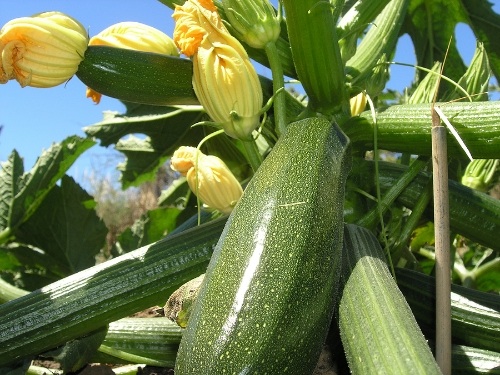Plants need good nutrition too …. it’s all about the N:P:K
Do you grow flowers, fruit, vegetables or potted plants? Well, at some point they need more than just water to help promote growth and produce.
Compost has nutrients enough for the initial growing season, but after that, they will all benefit from some plant feed. Crops and flowering plants growing in garden soil will need feeding through the summer, while they produce a harvest. Whilst there is a cost associated with plant food, most people who grow their own fruit and veg are doing it as a lifestyle benefit and not necessarily as a cost saving devise. If you totted up the number of hours you spend from planting the seeds, pricking out the seedlings and then weeding, and all this prior to harvesting, the true cost of growing your own would probably not balance out. And then there is the fact that many fruit and vegetables crop at the same time, so much of this produce is given away to friends and neighbours, which is linked to the lifestyle value.
There are three special ingredients in plant food, and given in the correct proportion, add invaluable nutrients to the plants.
First ingredient is nitrogen, abbreviated to N. Nitrogen helps create lush green leafy growth, so if you grow vegetables like lettuce and broccoli, foliage shrubs, or bedding plants such as hosta, look for this as the main ingredient. However, don’t be too heavy handed! Too much nitrogen, and your plants will grow lovely leaves instead of fruit, or flowers – which might not be the result you were hoping for.
Second up, is phosphate, or P. Plants need it to help develop healthy roots and immune system. Think of a building – without solid foundations, even the most beautiful and elegant construction will fall down.
Third comes K, for potassium, usually called potash. Potassium promotes fruiting and flowering – so it’s essential for tomatoes, hanging baskets, gooseberry bushes, etc.
If you buy specialised tomato food you’ll see phosphate as the number one ingredient. Did you know that tomato food isn’t just for tomatoes? It works for all your fruit, vegetables and flowers. For foliage shrubs and the like, all-purpose plant food has enough phosphate. You can tell which kind of food you have by the “N:P:K ratio” : three numbers, usually on the back label, which are always in that order. The biggest number indicates the kind of food it is. If you buy all-purpose plant food, you’ll notice that the N:P:K ratio is more equal. The similar nutrient levels will help your plants develop healthy roots, leaves and flowers.
This all sounds fairly straight forward, until you go into the garden centre and are faced with shelves filled with endless brands of plant food! For more information on the NPK ratio and more expert advice on what to look out for check out Love the Garden for general garden fats, but if you want to know more about the N:P:K ratio do so by clicking on the picture below and all will be revealed.
Are there any particular plant feeds that you would recommend?
Latest posts by Sally - Silversurfer's Editor (see all)
- How to help hay fever sufferers make Springtimemore comfortable - April 1, 2025
- Win a cruise of your choice with Fred. Olsen Cruise Lines - April 1, 2025
- Win a 2025/26 Ashes Experience for Two! - April 1, 2025
- Win ONE of THREE pairs of tickets for BBC Gardeners’ World Live at the NEC Birmingham - April 1, 2025
- The best of Debbie Reynolds - March 31, 2025





















